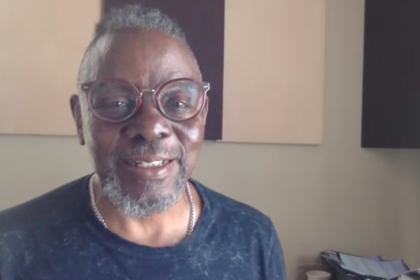Body language is an essential part of communication. While verbal words deliver the surface meaning of a conversation, it is often the unspoken gestures, expressions and posture that reveal the true intentions, emotions and thoughts behind the dialogue. Training your mind to interpret body language can provide insight into relationships, social interactions and professional engagements, allowing for more meaningful connections. The ability to understand nonverbal cues is not something innate; it can be honed and improved. Here are five ways to train your mind to better interpret body language.
1. Focus on facial expressions to understand emotions
The human face is one of the most expressive parts of the body, offering valuable information about someone’s feelings and intentions. Learning to accurately read facial expressions can significantly enhance your ability to interpret body language. Start by paying attention to the different elements of the face, such as the eyebrows, eyes and mouth. Notice how these parts move and shift during different emotional states.
For example, a genuine smile reaches the eyes and causes slight crow’s feet, while a fake smile only affects the mouth. Similarly, raised eyebrows can indicate surprise or curiosity, whereas furrowed brows might reveal confusion or concern. By training your mind to become more observant of these subtle facial shifts, you can pick up on emotional cues that others may miss.
Emotionally, this ability helps you understand the unspoken feelings of others. Whether you’re in a heated discussion or a sensitive conversation, being able to recognize someone’s discomfort or happiness before they vocalize it can strengthen your rapport and create more empathetic interactions.
2. Observe posture to gauge confidence and interest
Posture is one of the clearest indicators of a person’s emotional and mental state. Whether someone is standing tall with their shoulders back or slouching with a closed-off body position, their posture provides clues about their confidence, interest and openness. By learning to read posture effectively, you can better understand the dynamics of a situation.
For instance — individuals who are engaged and interested often lean forward slightly during a conversation — maintaining an open chest and facing the person they are interacting with. In contrast, someone disinterested or defensive may cross their arms, turn their body away or slouch. Practicing this awareness in everyday situations can train your mind to instantly recognize signs of enthusiasm, discomfort or disinterest.
In both professional and personal settings, being able to interpret posture can help you adjust your communication strategy. If you notice someone closing off, you might alter your approach to make them feel more at ease, ultimately fostering stronger connections.
3. Train your mind to notice hand gestures and fidgeting
Hands can communicate as much as words. When you tune into hand gestures, you’ll find that they can reveal nervousness, excitement or even deception. Open hands, especially with the palms facing up, typically indicate honesty and openness. On the other hand, fidgeting hands or movements that seem excessive could signal anxiety or discomfort.
To train your mind in noticing these hand gestures, start by observing common behaviors such as how people wave their hands while talking, tap their fingers when they’re impatient or clench their fists when stressed. You’ll find that the way people use their hands is often a direct reflection of their current emotional state.
This observational skill can be particularly useful in settings like negotiations, interviews or high-stakes conversations, where understanding the other person’s mental state could give you an advantage in navigating the interaction.
4. Pay attention to eye contact to read engagement and sincerity
Eye contact is one of the most powerful forms of non-verbal communication. It can convey confidence, sincerity and even vulnerability. At the same time, a lack of eye contact or darting eyes can indicate dishonesty, nervousness or disinterest. Learning to interpret these subtle cues helps you navigate social situations more effectively.
For instance, people who maintain consistent eye contact are generally seen as more confident and trustworthy. However, excessive eye contact can sometimes come off as aggressive or overly intense. On the other hand, avoidance of eye contact might suggest discomfort, insecurity or even deception.
By training your mind to monitor these subtleties, you can adjust your approach during conversations. For example, if you notice someone avoiding eye contact, you might offer them space to feel more comfortable or reframe the conversation to reduce their anxiety. Building this sensitivity can also help in professional settings, where understanding sincerity and engagement is critical to forming trust-based relationships.
5. Practice mindfulness to become more aware of non-verbal cues
One of the most effective ways to train your mind to interpret body language is through mindfulness. By being fully present and aware of your surroundings, you can observe subtle movements, shifts in tone and changes in posture that might otherwise go unnoticed. Mindfulness allows you to process not just what someone is saying, but how they are saying it.
Begin by focusing on the present moment during interactions. Notice the rhythm of the conversation, the pauses and the changes in someone’s demeanor. Instead of getting lost in your thoughts or responses, stay engaged with the person’s body language. This practice will make you more attuned to reading non-verbal cues and identifying unspoken emotional messages.
Mindfulness also extends to your body language. When you become more aware of your own gestures, posture and expressions, you can better manage how you come across to others. This self-awareness is key to improving your interpersonal communication and ensuring that you are sending the right message through your non-verbal signals.
Sharpening your mind to read the unspoken
Interpreting body language is an invaluable skill that can enhance your social interactions, professional engagements and personal relationships. While it might seem challenging at first, consistent practice in reading facial expressions, observing posture, noticing hand gestures, interpreting eye contact and practicing mindfulness can train your mind to become highly attuned to non-verbal communication.
Mastering these skills creates deeper connections with others and allows for more insightful communication. Body language offers a window into a person’s true thoughts and emotions, often revealing more than words ever could. By refining your ability to interpret these non-verbal cues, you’ll gain a profound advantage in understanding the world around you, and more importantly, the people within it.
This story was created using AI technology.













